These Low-Quality Foods Are Frequently Advertised As “Healthy”

Ask a health-conscious person about their diet, and you’ll almost always hear that they’re a super healthy eater. But if you probe a little deeper, it often becomes clear that this person is unknowingly consuming some foods that aren’t part of a healthy diet, which are potentially contributing to inflammation, reduced immunity, and a host of other unwanted results.
The truth is, there’s just so much confusion surrounding labels these days. Companies throw around buzz words such as “organic,” “all-natural,” “sugar-free,” and others like they’re no big deal. So it’s on us, the consumers, to use common sense, and a little detective work. If you need a cheat sheet, here are some foods that many of us consume on a regular basis that we absolutely, positively shouldn’t…
Energy Bars

Energy bars should really be written “energy” bars. These are essentially candy bars in fancier wrappers, masquerading as health foods. The highest-quality “energy” bars are incredibly processed, laden with sugar and contain hardly enough protein or fiber to make them worth the tradeoff.
When you go with low-end “energy” bars, now we’re talking GMO and pesticide-packed ingredients such as nuts, soy and other low-quality processed fillers and coatings such as maple syrup, chocolate etc. Unless you’ve got absolutely no other choice within a many-miles radius, do yourself a favor and pass on these altogether.
You can replace the convenience of this snack by making your own nutrient-dense trail mix, and eating that along with a banana or other piece of fruit. But whatever you do, save yourself the energy and don’t be eating “energy” bars.
Store-Bought Roasted Nuts

Who doesn’t appreciate a healthy, quick and simple snack? Nuts have a strong reputation of being just that, and in some cases this is true. But the roasted variety sold in mainstream stores typically includes the horrific industrial seed oils that I pointed out at the very beginning of this article, as well as hydrogenated trans fats, which are a surefire path to inflammation, and eventual chronic disease.
Almost more importantly than the aforementioned points is the issue of oxidation. Monounsaturated and polyunsaturated fats are prone to oxidation at high temperatures, causing nuts to become rancid. This turns otherwise good fats into very bad fats.
To ensure that the quality of the nuts that you’re eating is high, soak raw organic nuts and roast them yourself at a low-medium temperature for 10-20 mins. Throw these in a bag and do some guilt-free snacking on the go.
Soy
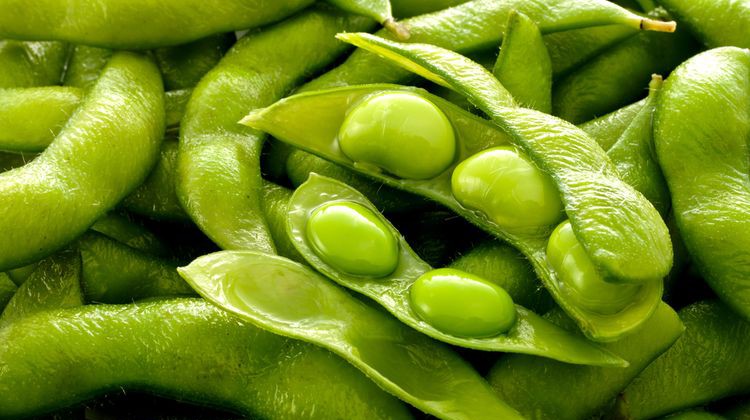
I would love to see some of the looks that this one generates. Contrary to popular belief, soy is just not good for you. Large quantities of it should be avoided in general, but unfermented variants of it should be avoided in any quantities.
This means that while fermented soy products, such as miso, tempeh, tamari and natto can be eaten in small quantities, soy milk, edamame and soy protein are a no-go.
Almost all of the soy grown in America is “Roundup Ready,” which means that this super-duper-GMO-product has been created in a pesticide-filled environment that aims to repel bugs. Most of us also happen to lack the enzymes required to properly digest soy, leading to a slew of digestive issues, including bloating, gat and malabsorption.
Soy products, such as soy protein and other soy-based supplements have been linked to hypothyroidism, breast cancer, asthma, allergic rhinitis and many other horrible conditions. Depending on your dietary restrictions or needs, minimally pasteurized goat’s milk is a healthy, easy(ish)-to-digest alternative to soy milk.
As for replacing soy protein, if you’re open to eating animal protein, it’ll always be your best bet from a nutritional impact standpoint. Funny how that works, right? We’re now going backward and offering old-school solutions to new alternative products.
Fruit Juices
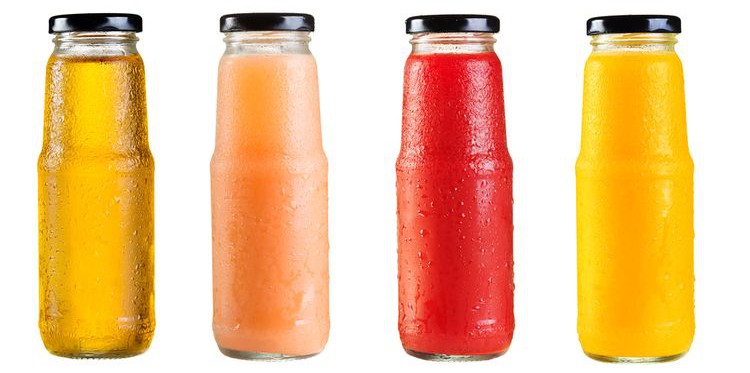
Let’s first address store-bought fruit juice. Commercial fruit juice is almost always pasteurized, which means that it’s been stripped of much of its nutrition. While pasteurization does serve benefits, in this case you’re consuming a denatured product that’s devoid of its original vitamins and minerals. Essentially, you’re gulping down flavored fructose.
As for the variety that you can make at home, fresh-squeezed fruit juice on the occasion won’t kill you. But if you think that this is something for every day, think again. Drinking an 8-ounce glass of orange juice is tantamount to consuming the juice of 4 average-sized oranges.
Think about how long it would take you to put down four oranges compared to the amount of time it would take you to chug those 8 ounces of juice. Eating 4 oranges (let’s be honest, who eats four oranges in one sitting?) allows time for peeling, chewing and digesting.
Your blood sugar naturally fluctuates in a smooth and easy manner. Drinking juice in a short period of time causes a sudden rise in blood sugar, followed by an equally sudden crash, called hypoglycemia. This leads to chronic fatigue and eventually, obesity.
If your body can’t properly metabolize the excess fructose that’s suddenly in your blood, you want to know where it gets storied? Your midsection. If you’re already thinking that you can simply beat this logic by drinking your juice over a 20-30 minute span… think again. You’d still be lacking the fiber that comes with the fruit.
Fruit contains a significant amount of soluble and insoluble fiber, which assist with important parts of the digestive process, including feeding beneficial gut bacteria. So stick to whole fruits, and get the vitamins and minerals that nature intended to provide you with as part of the package.
Frozen Yogurt
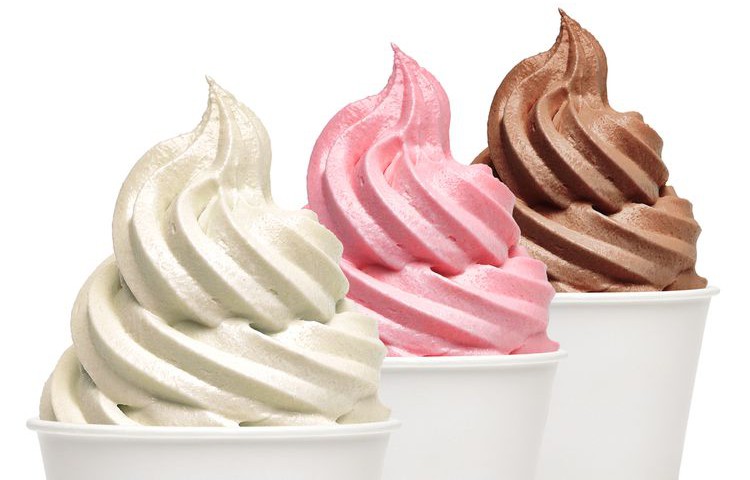
When the sun is out and the grass is green, who can blame you for wanting a cool treat? But before you hit up your local FroYo spot, take a closer look at what you’re getting. We all want to believe that we’re making healthy choices.
And when we hear something good about a particular product, it’s easy and convenient to not dig any deeper or question things any further. You’ve probably heard by now that yogurt contains live active cultures that are helpful to your body, and more specifically to your gut.
As much as I hate to be the bearer of bad news, there are rarely, if ever, any live active cultures in frozen yogurt. Processing has heated the product, killing off all live active cultures that might have been there to begin with. In addition, frozen yogurt almost always contains chemicals and additives that will do more harm than any good you might get from its supposed bacterial offerings.
If you’re looking for yogurt, choose a full-fat Greek yogurt that hasn’t been processed or heated. If the probiotic benefits are what you’re in seek of, the full-fat Greek yogurt will still do the trick, as will sauerkraut, kimchee or kefir.
Fake Butter, Chemical Spreads and Margarine

For those of you who grew up with parents that tried to convince you that butter is the devil and that margarine is a safer, lower-fat alternative, I encourage you just this once to believe that mama didn’t ALWAYS know best. I can’t believe it’s not butter. Because it isn’t butter. Nor is it edible. Really.
Margarine, faux-butter and those chemical sprays that somehow made their way onto the shelves of supermarkets across America are loaded with cheap, processed, artificial ingredients and fillers.
These can do a real number on your arteries and your heart, leading to serious problems in the not-so-distant future. Worst of all? These butter-substitutes don’t even taste good! The solution here is obvious. Butter. That’s right.
The real deal. The one your mom told you to stay away from. But not just any butter – grass-fed, organic butter. It’s filled with healthy fats, is a good source of conjugated linoleic acid, as well as vitamins A, D and E, and almost most importantly… It tastes spectacular!
Whole Wheat Products
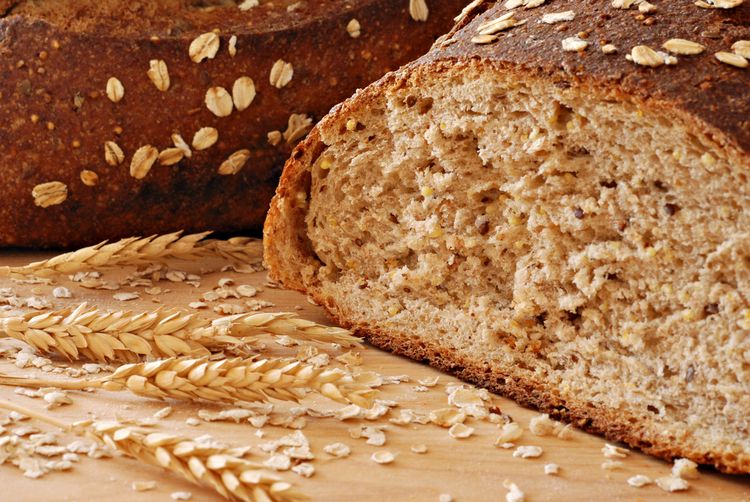
The deceiving nature of labels is really so upsetting. We’re at a point where anything with “whole wheat” pasted on a package triggers the notion that this must be good for you, which couldn’t be further from the truth.
The majority of whole wheat products in the marketplace today are sugar-laden, heavily-processed and made with genetically modified, factory-farmed ingredients. In addition, the wheat itself is grown in nutrient-absent soil and smothered in pesticides. Does all of this sound healthy to you?
If that’s not enough, today’s wheat is the number one source of dietary gluten, which a good amount of the population is intolerant to. And I’m not just talking about celiac disease sufferers. Non-celiac gluten sensitivity has become all-too-common, with many people not even knowing that it’s the culprit behind many of their health complaints.
If health is a priority for you, try going grain-free altogether for a period of time. If you’d like to reintegrate grains into your life, start slowly and stick to gluten-free options such as rice, and bake or buy products that contain coconut flour instead of wheat flour.
Veggie Burgers
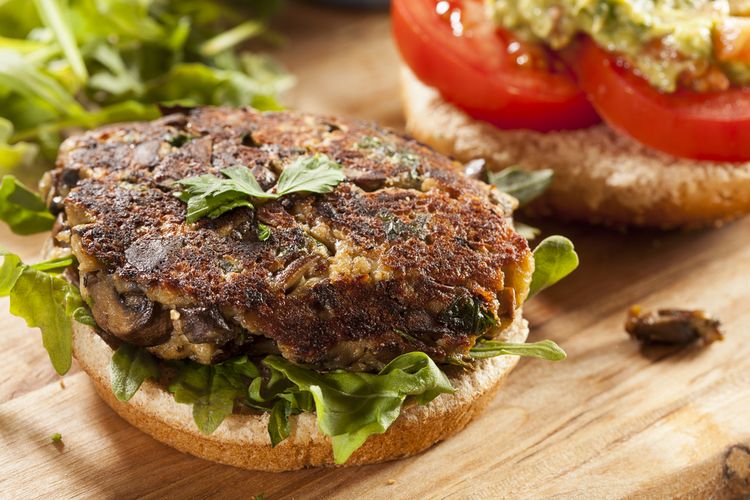
While this vegetarian alternative to the traditional hamburger can be flavorful and even nutritious when comprised of the right ingredients, many food manufacturers create variations of this product that are chock full of additives and fillers.
When buying a pre-made veggie burger, make sure that the vegetables are at the absolute top of the ingredients list, and that ingredients such as cornstarch, yeast extract and gums of any kind are either nowhere to be found, or at the very least, at the bottom of the list. As always, read those labels- the ingredients are usually ‘beyond’ comprised of chemicals.
Farmed Fish

It’s widely accepted that fish is an excellent source of both protein and healthy fat. But what kind of fish, exactly? Most people unknowingly (or perhaps, blindly) eat farmed fish, which is a product that’s been raised in an environment where the primary objective is to produce more fish at a faster rate, and at a lower cost.
Farmed fish are raised in cramped, dirty tanks or pens, leaving them prone to illness. This necessitates the use of antibiotics, anti-fungals and other drugs to resolve illness. Farmed fish are likely the highest PCB-contaminated protein source in the American food supply, as they contain up to 40 times more PCBs than other foods.
These poor, stressed-out, drugged-up fish make for an unhealthy meal, and this doesn’t even take into account the preparation process, which often includes freezing, unfreezing, battering, frying… you get the idea. No good.
The move here is to transition to certified wild-caught fish. If this is unavailable to you in your area, look to buy fish from smaller, boutique-type fish farms that are transparent in their farming practices. If you have no alternative to farmed fish, at least choose a product from a place that practices eco-friendly methods.
Agave Nectar
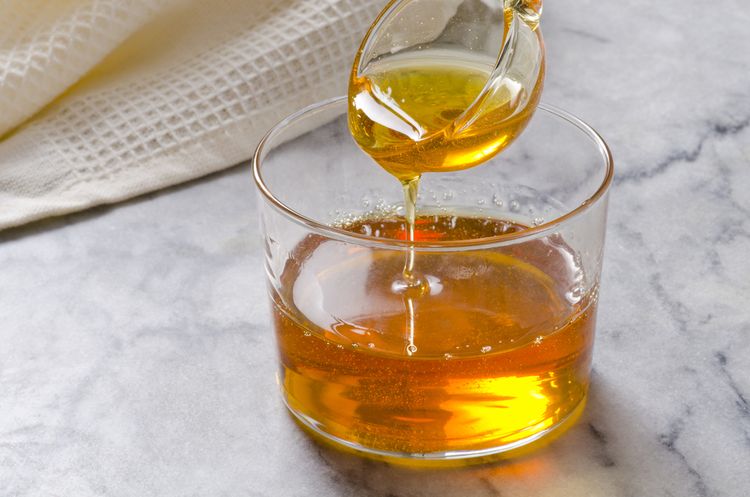
This is another one of those items that we’ve all been tricked into believing is healthy, when in fact it simply isn’t true. Agave has been hailed as low-glycemic, which relies on the measurements of the glycemic index. This index rates carbohydrates based on how quickly they’ll spike your blood sugar, which is in and of itself overly simplistic in assessing whether a food is healthy or not.
Agave is heavily processed and high in fructose. Your body takes some time to convert fructose into glucose, glycogen, lactate and fat in your liver, which can lead to insulin resistance and fatty liver disease.
If you’ve got a sweet tooth, try raw honey, raw stevia or grade B maple syrup, as they’re far healthier choices than agave nectar.
Diet Soda
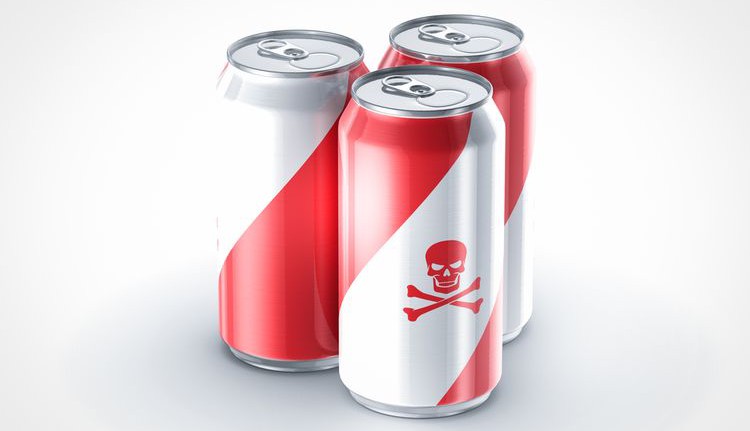
It blows my mind that diet soda is still considered by some to be a healthy choice. While low in calories, it’s completely lacking in nutrition of any kind and contains artificial sweeteners that have been linked to all sorts of chronic health conditions.
One of those conditions is metabolic syndrome, which elevates your risk for developing coronary heart disease, type II diabetes or having a stroke.
Do yourself a favor and ditch diet soda altogether. While it might seem tough to give up, you’ll be saving your health one drink at a time. Instead of soda, drink lots of water, herbal tea or if you want some spice, seltzer water. As long as it isn’t soda, you’re already making progress.
Smoothies

Now, wait just a second. Before you get into an uproar, let’s be clear here – not all smoothies are created equally. When you go to a chain restaurant or supermarket and buy either a standard-issue custom smoothie or pre-packaged smoothie, it often consists of chemicals, preservatives, additives and a whole lot of sugar.
When making your own smoothie, you still need to be cautious to not load it with fruit juices (apple, orange, passion fruit, etc), ice cream, milk or excess bananas, as these can quietly (and sneakily) up the sugar content to an unacceptable level.
All that not-so-good stuff will create a cycle of spiking your blood sugar before it crashes, which is linked to type II diabetes and insulin resistance. Both of these conditions can also lead to much more complicated and difficult-to-manage health problems.
Making or ordering your own custom, vegetable-heavy smoothie is a great choice. A base of water, coconut milk or almond milk is a good way to go. From there, add in a good mix of rainbow-colored vegetables. And if you’re really feeling lively, throw in some peeled roots or herbs, such as ginger or turmeric.
Pretzels

America is certainly a country of snackers, this much isn’t up for debate. There was a time, not too long ago, where pretzels were considered to be a reasonably healthy choice. Low in fat and low in calories, said the health “gurus.”
Here’s what the “gurus” didn’t tell you. A pretzel is essentially the fusion of excess table salt, corn oil and flour that spikes blood sugar and offers zero nutritional value.
If you’re looking for a quick snack replacement for the almighty (not so mighty) pretzel, try kale chips, dried seaweed, fresh fruit (or even baked – a baked apple with a little cinnamon is insanely delicious), raw vegetables or even a handful of those healthy roasted nuts that we advised you on earlier in this article.
Low-Fat/Fat-Free Foods

By now, many of you get that the hype around the low-fat/fat-free revolution is a lot of smoke and mirrors, but there are still many people who squander their money on these types of products.
Going back to the 1950’s, we’ve been told that fat will clog our arteries, make us fat and kill us. Ever since that utterly incorrect advice, we’ve somehow become the fattest and sickest nation in the world.
Enter low-fat and fat-free foods. With the fat removed, these food-lookalike products are often filled with loads of processed sugars and other chemicals, which will ultimately lead you to actually being fat, sick and well on your way to chronic illness.
As for fat, let’s set the record straight. Fat in and of itself won’t make you fat, nor will it make you sick. The problem lies in what’s been done TO the fat. Highly processed oils, such as vegetable oil and canola oil, along with partially hydrogenated fats and farmed animal fats, will certainly lead to inflammation, and ultimately chronic illness. So in this regard, you’ll want to say no to these types of fats.
But let’s establish one thing – you absolutely need healthy fats to maintain optimum health. Your cells, hormones, immune system and brain depend on them more than you could imagine. The key is to eat the right kinds of fats. Coconut oil, avocado, full fat grass-fed dairy such as butter or kefir, pastured eggs, wild-caught fish and grass-fed beef are all excellent choices. And none of these will make you fat.
Granola
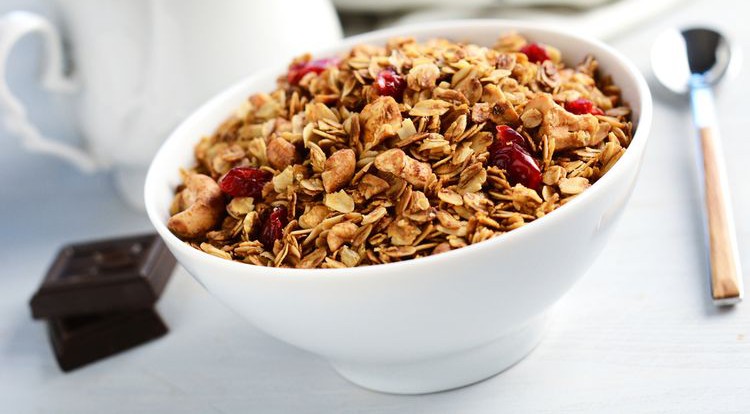
I have to give it to granola. It’s somehow managed to maintain its reputation as a healthy food for seemingly forever. But it’s definitely time to reconsider granola as a healthy choice, especially the store-bought variety.
While granola can contain a host of healthy ingredients that are high in potassium, protein and fiber, many of these store-bought mixes also contain an unbelievable amount of sugar and other less-than-desirable ingredients.
As always, read labels. You’ll want to avoid any granola that contains corn syrup or added sugar. This includes yogurt-coated fruits and nuts, as well as chocolate chips and other such ingredients.
If you’re going to eat granola, choose one that uses honey as its only sweetener. Believe it or not, you could also make your own in very little time, and it’ll not only be much healthier, but it’ll also taste a heck of a lot better.
You’ll need raw, unsalted sunflower seeds, raw, unsalted pumpkin seeds, golden flaxseed meal, un-hulled sesame seeds, coconut oil, raw honey, pure vanilla extract, ground cinnamon and sea salt. For added benefits you could also include raw almonds. This will make for a guilt-free, delicious and healthy snack.
Gluten-Free Snack Foods

We all seem to have a friend who’s gone gluten-free. And by gluten-free, I mean gluten-free breads, crackers, cakes, bars etc. Totally defeating the purpose of dodging gluten in the first place.
The gluten-free craze has lured product manufacturers into the mix of producing tons of gluten-free junk foods. These products typically contain rancid oils, gluten-free processed sugar and heavily refined gluten-free grains. So while you might be dodging gluten, you’re introducing a host of new and equally undesirable ingredients into your body.
If you want to go truly gluten-free, then stick to a healthy diet made up of vegetables, fruits, clean poultry, meats and fish. If snack foods are on your radar, make your own or search for those that contain none of the gluten-free poisons that’ll leave you in as bad a place as most gluten-laden foods.
Conventionally-Raised Meat

Consuming non-organic, genetically modified meat is something that you should absolutely avoid at all costs. You are what the animals eat, and in the case of conventional meat, this means hormones, antibiotics and pesticides. These things enter your digestive tract and literally get stored in fat cells.
The list of health problems that could develop from eating these conventionally raised products is a daunting one to look at, but suffice to say that if you’d like to avoid increased risk of allergies, IBS/IBD, skin issues and general feelings of illness, steer clear.
I highly recommend buying your meat from a local, trusted farmer. Get to know your local farmer and his practices. Farmers markets are a great place to connect with the people who raise the food that you’re putting into your body, and just knowing those who have a significant impact on the state of your health can give you confidence in the purchases that you make.
Bran Muffins

When you’re walking by the baked goods aisle of your grocery store, or driving by your local bakery, sometimes you get that itch that you just need to scratch. But once you’re perusing the baked goods, you realize that you still want to make the healthiest choice possible. So you opt for a bran muffin. Eeehhh. Wrong.
While bran muffins usually contain the fiber that you’re in seek of, they also contain added sugar and bad fats in the form of low-quality oils. If you really want the healthiest baked good available to you, you’ll likely have to bake it yourself.
Otherwise ask the baker if they have anything made with pure applesauce and honey as sweeteners, and try to find out which oils have been used in the baking process. While these questions might seem annoying, they’re far less annoying than the damage you’d be doing to your body by blindly consuming that bran muffin.
“All Natural” Foods
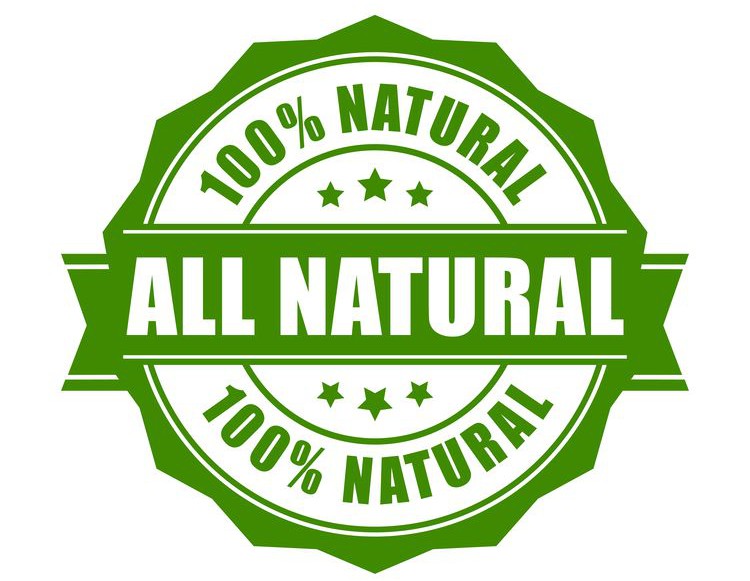
Everything from chicken to fruit juice gets the “all natural” label these days. The use of “all natural” has become the most common marketing ploy term in existence.
Unfortunately, anything that originated from the earth can be termed “natural,” even if that ingredient has been tinkered with and engineered multiple-times over, and is now completely nutrient-deficient.
So while the term “all natural” doesn’t in and of itself qualify a food as bad, I’m always weary of this label because it shows me that the company is using what is currently a grey area in food labeling to its marketing advantage.
As always, read labels and ingredients. If there’s even a single word on the label that you don’t recognize or can’t pronounce, chances are you don’t want to be putting it into your body.
Table Salt
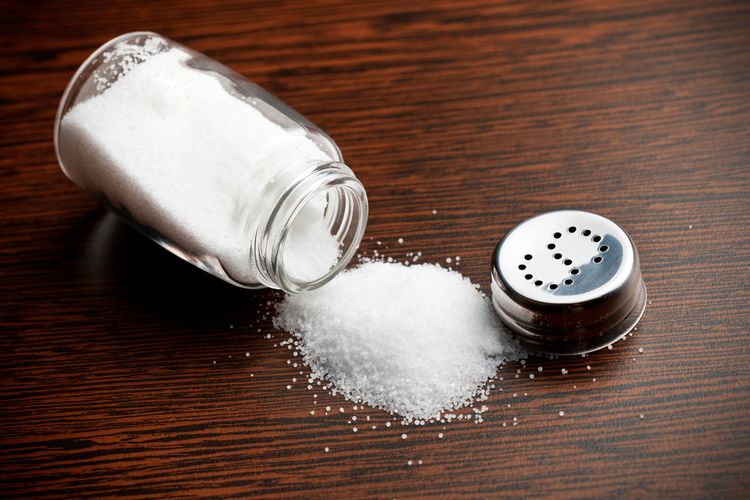
We’ve been hearing for years that table salt causes hypertension, yet the majority of restaurants in this country still supply it on every single table and bar counter. How does this make sense?
Derived from sea salt, table salt is created through a process of demineralization, followed by the use of additives (such as aluminum) to dry it and eventually heat it to extremely high temperatures.
In addition, table salt is often iodized, which puts you at risk for over-iodization. This has been shown to enlarge the thyroid and cause thyroid-related autoimmunity illnesses.
As is the case with several of my suggestions on this list, the replacement is of course the original. Celtic sea salt can alkalize the body, balance blood sugars, eliminate mucus buildup, strengthen immunity, improve brain function, and the list goes on. And with celtic sea salt comes none of the health risks associated with table salt.
Microwave Popcorn

Filled with carcinogens, this “food” might be quick and easy, but its potential repercussions far outweigh its convenience benefits. Even if you were to find an organic version, it still wouldn’t be advisable, as microwaveable popcorn bags are coated with PFOAs, a chemical that’s been linked to cancer.
In addition to the popcorn itself, this product is often accompanied by fake butter, which contains a compound called diacetyl, which has been linked to lung disease when inhaled in large quantities.
If you’re a real popcorn lover, simply make your own. Buy plain, organic popcorn kernels at your local health market and use coconut oil or organic, full-fat grass-fed butter.
Most Cooking Oils
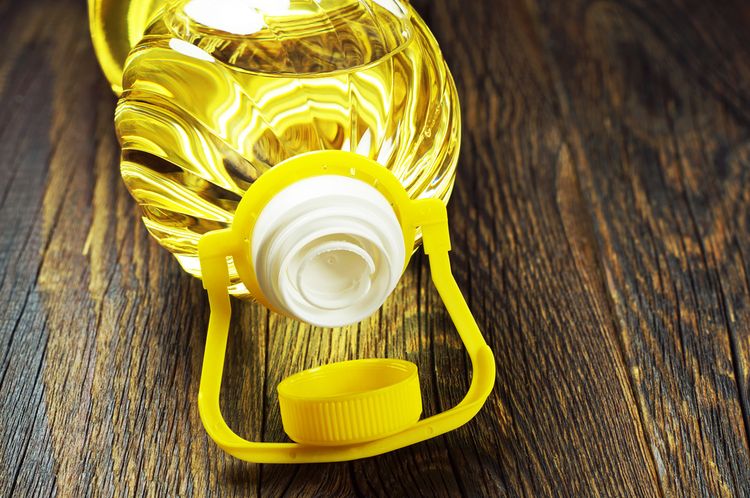
Canola, vegetable, soybean and corn oils are pushed as “heart healthy” choices for both cooking and baking. They’re also in just about every processed, packaged food that you’ll find on your supermarket shelves.
The problem with these oils is that they’re exceptionally high in omega-6 polyunsaturated fats (PUFA’s). Consuming a diet that’s high in omega-6 fats will create system-wide inflammation, which is present in all forms of disease, including diabetes and heart disease.
I would highly encourage you to only cook with coconut oil or ghee, and to use a high quality extra-virgin olive oil for unheated purposes, such as salad dressings or to add some extra healthy raw fats into your meal.
Contrary to what you’ll read in many places, don’t spend big bucks on extra virgin coconut oil for cooking purposes. Instead opt for a high quality refined coconut oil that is not hydrogenated, contains no hexane and is certified organic.
Conventional Milk

The problem with conventional milk lies in the genetic modification of the cows that produce it, as well as the hormones and antibiotics that these cows receive in order to maximize milk production.
As is the case with conventional meat, the toxins that the animal possesses will get transferred to you. So unless you’re prepared to run the risk of contracting a host of illnesses from a glass of milk, I’d advise reconsidering the choice.
Furthermore, when milk is pasteurized it loses its nutritional value, as well as an important enzyme – lactase. Without this enzyme, many people struggle to digest the milk sugar, lactose. It’s estimated that nearly 65% of the human population struggles to some degree to digest lactose after infancy.
Raw, organic milk from grass-fed cows is far healthier. It can usually be found in local health food stores or at your local farmers market.
